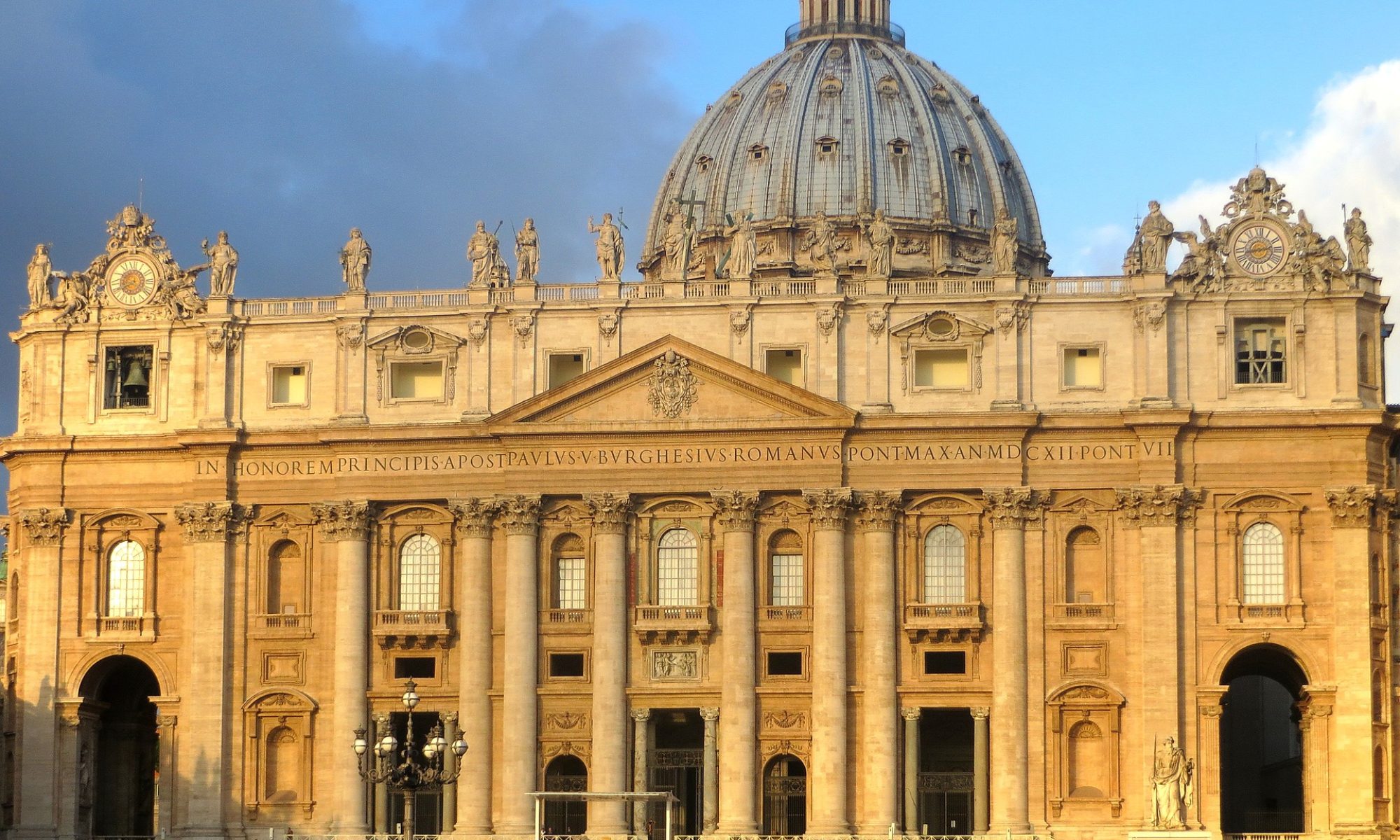January 28th, 2011
One of the prerogatives of the teaching office of the Pope is to hold the cathedra Petri (Peter’s chair). St. Peter’s basilica hosts the relics of a chair that tradition traces back to the apostle Peter (though, like most relics, they were produced in the Middle Age). The cathedra Petri is part of the altar, so as to indicate the unique combination of the teaching and sacramental role of the Pope. The First Vatican Council (1870) introduced the dogma of the infallibility of the Pope when he speaks ex-cathedra (from the chair). This is not a physical reference to the chair, though the Pope often speaks literally from the chair when presiding over rites and functions in St. Peter’s. Ex-cathedra refers to particular conditions which confer the mark of infallibility to his teaching. Besides this unique expression of papal authority, the chair also refers to his ordinary teaching office which takes place in different forms, such as encyclicals, exhortations, speeches, books, media (both written and audio), and occasions like papal visits and the presence of regular audiences.
As part of his ordinary, weekly teaching office, the Pope delivers a catechetical speech on Wednesdays in the context of a general audience which is attended by a couple thousand pilgrims, visitors, etc. The presentation is in Italian, though written summaries of the speech in other languages are distributed to the public. All texts are readily available on the Vatican website (www.vatican.va). Generally the Pope follows series on the liturgical calendar, doctrinal topics, the lives of saints, Church traditions, etc. On January 12th, the topic of the catechesis was particularly interesting in that it touched on purgatory.
Belief in purgatory is part of the RC doctrine concerning the afterlife. It was elaborated in the Middle Ages and then stated doctrinally by the Councils of Florence (1438) and Trent (1563). It is also taught in the 1992 Catechism (nn. 1030-1032). This is to say that it is well entrenched in the tradition of the RC Church and her present-day doctrinal horizon. Purgatory basically refers to the ‚Äúfinal purification‚Äù of the saved ones in order to achieve the holiness necessary to enter heaven. The premise of purgatory is that salvation is not by grace and faith alone, but is by grace and what is achieved by means of merit and works. Purgatory is the last “work” required to get to heaven, i.e. a time of purification that lasts in proportion to what still needs to be purified. While it contains reminiscences of the language of 1 Corinthians 3:15 and 1 Peter 1:7, the driving force of its development has been the practice of prayer for the dead, as the RC Catechism honestly acknowledges. In fact, RC doctrine believes that prayers, indulgences and works of penance can be offered on behalf of the dead so that their purification through purgatory is accelerated.
In one of the first catechesis of the new year, Benedict XVI returns to the doctrine of purgatory in the context of a devotional talk on Saint Catherine of Genoa. She was a XV century mystic who is best known for her vision of purgatory. According to the Pope, Catherine does not add new revelation on purgatory, yet her visions underline the fact that it is an “interior fire” that prepares the soul for full communion with God. Rather than a physical place of fire, as portrayed by Dante’s imagination in the Divine Comedy, purgatory is depicted by Catherine of Genoa as an inner fire which elevates man’s path towards God.
The Pope makes it clear that this mystical intelligence does not alter the traditional doctrine, but expands it towards its mysterious borders. The physical, spatial dimensions of purgatory are enriched further by the mystical development. It is a matter of adding other elements to the already consolidated doctrine and not questioning its well established profile.
Purgatory has already been at the center of Benedict XVI’s magisterium in a more ample treatment. His second encyclical, Spe Salvi (Saved in hope, 2007), contains telling comments on judgment in the afterlife. In the papal encyclical, God’s judgment is a combination of justice and grace. Few people (if any) receive only his justice (i.e. punishment), and few people receive His full grace (i.e. immediate salvation). Instead most people receive both justice and grace, then purgatory is this intermediate state of the soul that discloses both (nn. 45-48). In the afterlife the soul goes through a time of purification, deserving neither justice or grace. In Spe Salvi as well, the Pope stresses the importance of prayers and acts of suffrage on behalf of the dead in order to speed their time of purification. This is based on a belief on “communion” between the living and the dead that allows the suffrage of the former for the latter.
The doctrine of purgatory is part of the RC doctrinal web that impinges on grace, sin, salvation and eternal life. It is not a disposable, secondary appendix, but an essential part of the RC view of the ordo saluti. Thus far, Benedict XVI has been re-stating and expanding its doctrinal core, adding some mystical suggestions rather than changing it towards a more biblical picture of the afterlife.
Leonardo De Chirico
leonardo.dechirico@ifeditalia.org
